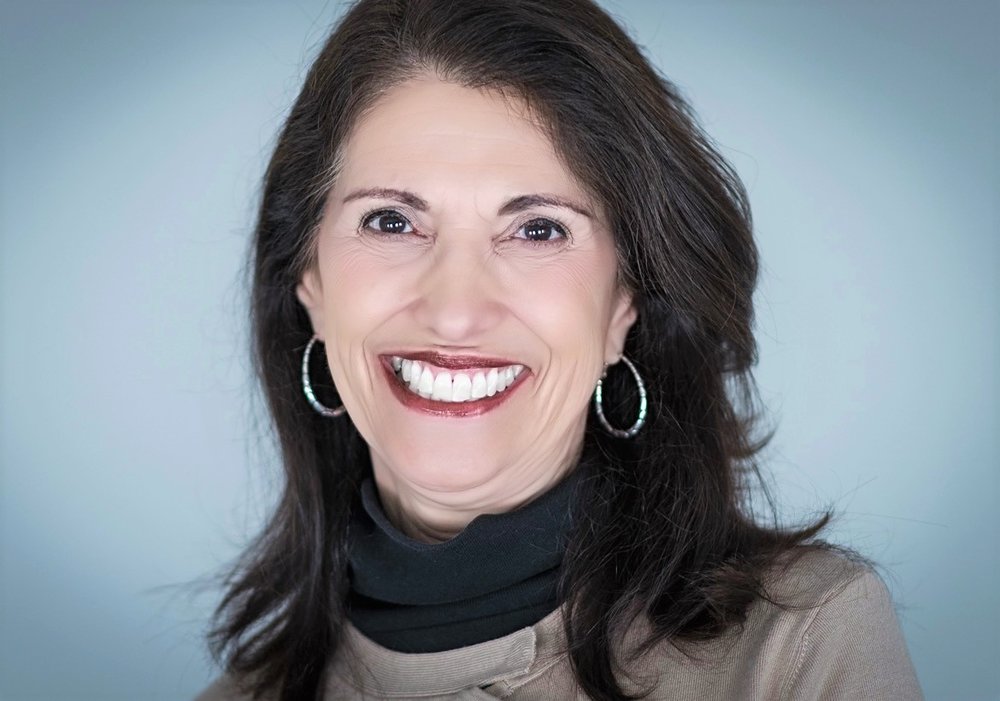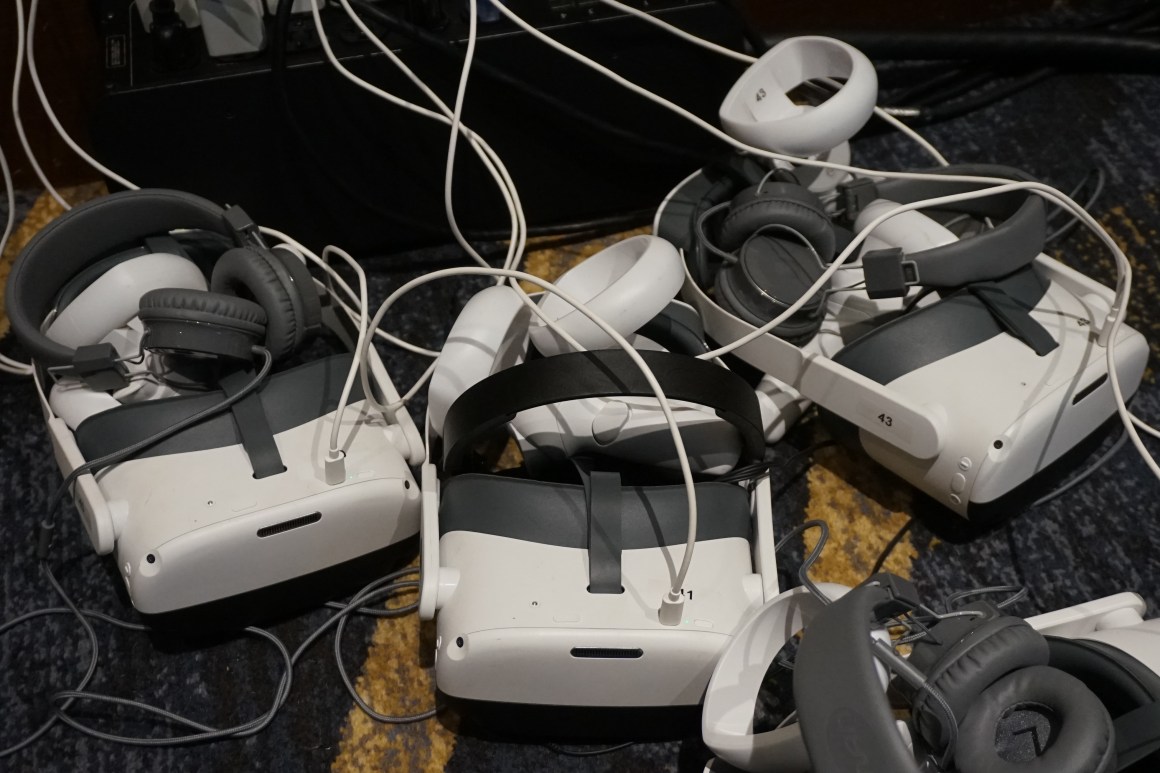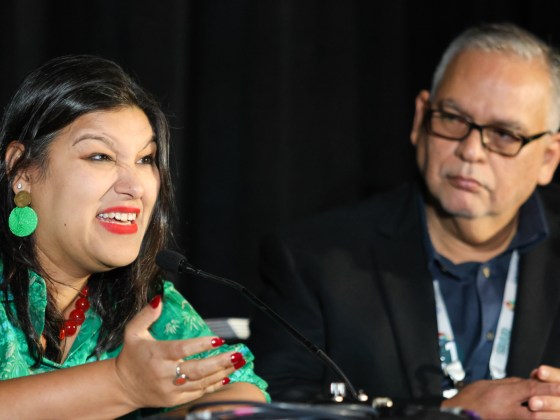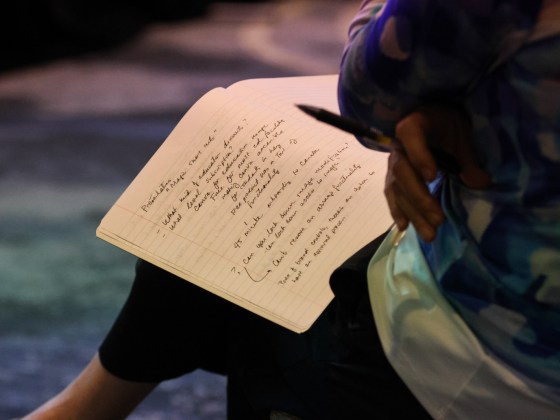Diane Foley is the founder and president of the James W. Foley Legacy Foundation, which aims to protect journalists and international travelers while holding the government accountable. The group has also branched out to provide safety training sessions to journalists who may face hostile situations.

ONA23 featured two sessions on Thursday that allowed conference attendees to experience a few minutes of training powered by artificial intelligence using Head Set Immersive, a virtual reality (VR) system developed by journalists.
The session featured speakers Tom Durkin, the foundation’s Education Program Director; Kate Parkinson, Head Set Co-Founder; and Ellen Shearer, Board Chair of the foundation. Foley was also present to help with the simulations and make sure participants felt safe.
I had the opportunity to speak with Foley about the initiative and her motivations.
(This interview was edited and condensed for clarity.)
Q: Can you tell me about the beginnings of the foundation?
A: Our organization is named in honor of our son, James Foley. In 2014, when ISIS was taking over a lot of the world, ISIS kidnapped many journalists, and the European journalists were negotiated out, but the United States and United Kingdom journalists were not, and they were all killed. Our son, Jim, was one of them. The two things we do are journalist safety — because we’re very passionate about journalists keeping themselves safe and knowing what are risky things and how to educate themselves about safety — and helping Americans come home when they’re kidnapped abroad, or taken hostage, like Evan Gershkovich or Austin Tice, who have been wrongfully detained in Russia and Syria. Our work stems from advocating [within] the government.
Q: Why did the conference session focus on education rather than your advocacy?
A: We’ve found a real gap in schools of journalism. They train students to be good journalists — how to interview, how to write, how to photograph — but don’t talk enough about safety, how to protect themselves, and the resources. We feel compelled; we think it’s a moral obligation of ours to take preventative measures and make sure all aspiring journalists keep themselves safe and are aware of safety needs.
Q: What has stood out to you when witnessing attendees take part in these sessions?
A: What we like about virtual reality is it makes people aware of when you’re in a situation — in this case, civil unrest — that you might not expect to happen in your own hometown. It makes you realize that sometimes when your adrenaline gets going if you haven’t prepared well, if you don’t know what exits are, if you don’t know how to get help, you know, it helps journalists recognize the need for safety training. You need to have a risk assessment, you need to know what you’re doing, you need to know what to do in terms of emergency, that kind of thing. People have found it incredibly helpful in terms of raising their awareness; otherwise, it’s just like any course you have in school — something you can brush off after it’s done. But this makes you realize it costs you your life or the life of someone you interview, and that you’ve got to be aware of safety on both sides. We also address the trauma involved in being journalists; sometimes, you witness a lot of things that are really sad, or really frightening, and we go over how to protect yourself and seek help to mitigate those things.
Q: You’re using Head Set to provide a sense of hostile and violent environments. This is a recent initiative, correct?
A: Yes, Head Set is a for-profit company and we’re a non-profit. We pay Head Set to do this with us. They designed these programs because they were journalists themselves. They crafted programs around civil unrest, conflict, problems, first aid, and different things like that. We bring our training and freelancers show up. The student one we have is totally free for universities. We just want people to use it.

Q: Before you had Head Set, what was the process of doing the training?
A: Head Set is a way to pique interest and an awareness of the need for training. The full sessions cover hostile environments and first aid training. They’re usually five days of training lasting all day and they’re very important — especially if you can afford it. We’ve done a lot of collaborations: We helped start “A Culture of Safety Alliance,” which is an organization for freelancers all around the world (because freelancers have the least protection.) If you work for CNN or BBC, you’re already going to get training as one of the staff members, but a lot of journalists are freelancers. So, they may do a story for CNN or for BBC, but then they don’t have training paid for.
Q: What kind of reactions have people had?
A: We’ve had several people kind of frightened, just taking it off or not even wanting to try it. I think that kind of awareness is healthy because you need to know what you’re drawn to, how you’re able to maintain your own self-control, self-protection, and protection of others — and that you’re able to be safe and keep others safe. For some people, they get a lot of adrenaline and then can think very clearly in those situations, and that’s awesome. And that may be the type of work they are able to do.
Q: What do you do when they take off the VR set to bring them back to the feeling of safety?
A: It’s just a question of sitting with them. I have them take some deep breaths [and] even drink water. I ask how they’re doing, talk to them and make sure that they feel okay.
Q: Did you know anything about this field before establishing the foundation?
A: Not at all. I was a nurse practitioner. I was clueless about the risks that journalists have to undergo — very clueless about international hostages. But, unfortunately, you’d be surprised about how many journalists are unaware, too. So, that’s why this is what I’m passionate about.







You must be logged in to post a comment.